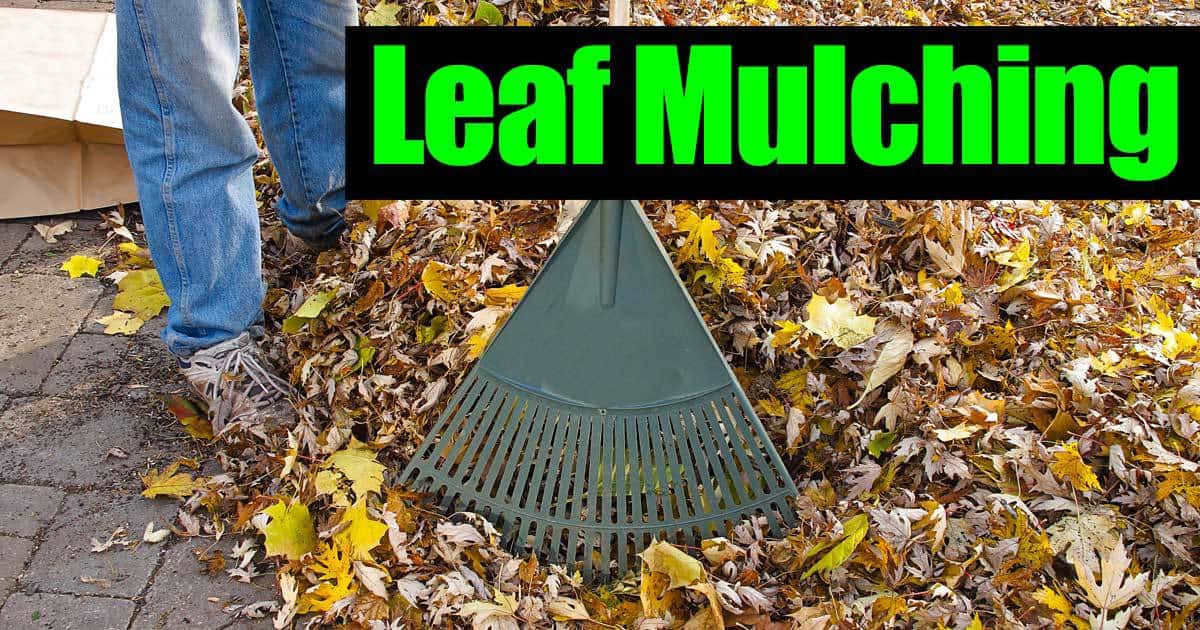Question: My question is on leaf mulch. Years ago I remember my grandfather burning mountains of leaves every fall. Now that seems like such a waste of good organic material.
I’ve been thinking about purchasing the Worx leaf mulcher shredder I’ve seen on TV to grind up all of our leaves in the fall. Is there any benefit of mulching the leaves? Do they provide any nutritional benefits to the soil? Caleb, Remington Virginia

Answer: First off – Don’t Burn Those Leaves!
No man would dream of burning a bushel full of one-dollar bills, yet each fall, bushels, and bushels of money go up in smoke or are discarded.
Benefits of Leaf Mulch
Decayed leaves improve the soil condition. They can also increase the yield and flavor of fruits and vegetables. The material from mulching leaves brings:
- A greater profusion of bloom to flower beds
- Better health, and more beauty to evergreens, and flowering shrubs.
Dried Leaves Benefits: From all appearances, a dried leaf does not seem to contain much plant food. A leaf’s value lies in the great number of nutrients it adds to the soil.
Nature’s Cycle
Most soils are leached by heavy rains. Soil elements, necessary for good plant growth, are soluble in water and are carried far down into the ground out of reach of ordinary plants.
But trees, with their long, hungry roots reach down to this store-house of nutrients and absorb great quantities as plant food. This food is then sent up the trunk to be used in the manufacturing of leaf cells.
In the fall, these leaves tumble to the earth where they decay, and return to the soil those valuable elements it has lost through leaching. This cycle goes on year after year, maintaining the top soil with tree mulch in a forest at its peak of fertility. Is it a wonder the vegetation is so lush in a woods?
Fallen leaves oxidize slowly releasing a constant flow of plant food the year around. Besides being Nature’s own food, they help to keep the soil spongy, porous, and moist. It would do us well to take a few hints from Mother Nature. Instead of burning leaves, we can put them to work improving our soil.
Mulching Leaves Into The Lawn
Here is a way to end all lawn raking in the fall, and, at the same time, build up the turf. Mulch the leaves right on your lawn with a rotary mower.
Set the blade as low as possible, and go right along as though you are cutting the grass. The mower will shred the leaves, and blow them evenly over the lawn as you go. The small leaf particles will eventually work their way down around the grass roots where they will decay, turning the ground into rich, dark loam.
If you have but a few trees on your lawn, gather up a bunch of the leaves with a leaf blower, then scatter several bushels of leaves over areas where there are none, then go along and shred them up. If, however, you have too many leaves, use some of them elsewhere. Too many shredded leaves can choke out the grass.
How To Mulch Leaves – Plant Mulching Tips
Leaves are excellent when used as a winter mulch beneath evergreens, shrubs, roses, and over perennials. Leaves slowly oxidize releasing heat which prevents plants from freezing in the colder regions.
In the warmer parts of America, these leaves will keep the soil around plant roots cool, moist and porous.
A word of caution about mulching around trees like peonies with leaves: first place about two inches of coarse straw or grass stalks over the crown of each plant to allow for air circulation, then place four inches of leaves as a top blanket.
In spring, do not remove the leaf mulch if unnecessary. Merely cover it with peat moss or grass clippings. Decaying leaves are wonderful for acid-loving plants such as evergreens and blueberries.
Besides adding valuable nutrients to the soil that are so essential for good plant growth, fallen leaves help retain moisture, build up loam and prevent the soil from packing hard in hot, dry weather.
Leaf Compost Benefits
If you are familiar with a compost heap or compost pile, you know the great value of leaves as an organic matter and plant material. But, if you have never made compost, here is how you can do so in 12 days.
What better way could you dispose of your garden refuse than turning it into rich compost? Clean your garden and flower beds by pulling up all dried and frozen plants, then rake the planting area clean.
Throw all trash on a pile, (a compost bin would be ideal) and add several bushels of leaves. Bring in three bushels of aged cow manure or litter, and shred it alternately with the trash. A rotary mower can be used for this work. When all trash and manure has been shredded, pile the material in a heap, and water down well.
Within three days, the center of the pile should be quite hot to the touch. Turn it over completely with a garden fork and water down again. Do this two more times at three-day intervals, then allow the pile to remain undisturbed until it cools off.
After it has cooled, the dark, rich material made possible by decomposition process, is now ready for use. Place at least two inches thick under shrubs, trees, roses, around berry plants, grape vines, and other perennials.
All of these benefits are derived from trash that otherwise would go up in smoke. The fertility of our soil is declining every year. Build up its productivity with leaves.
